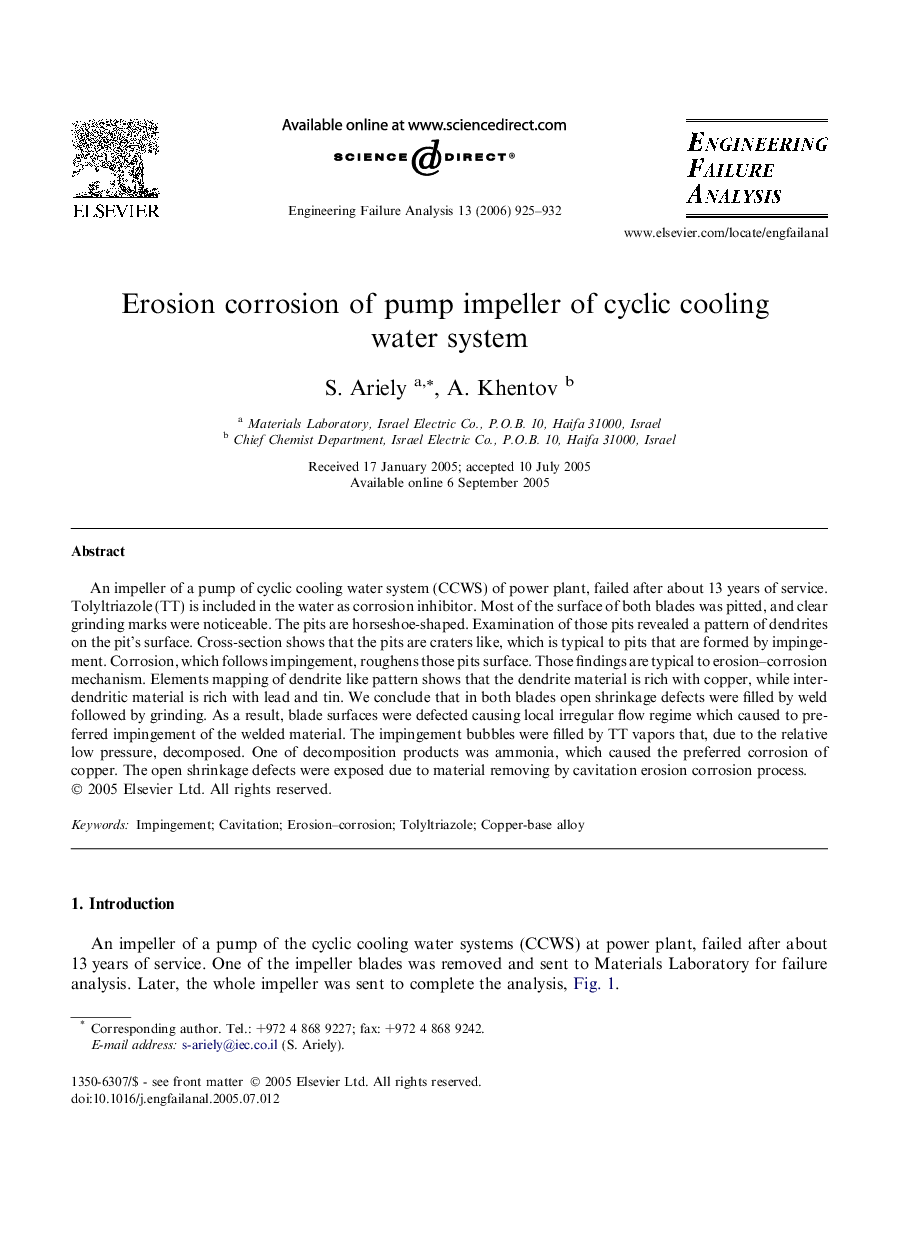| Article ID | Journal | Published Year | Pages | File Type |
|---|---|---|---|---|
| 774440 | Engineering Failure Analysis | 2006 | 8 Pages |
An impeller of a pump of cyclic cooling water system (CCWS) of power plant, failed after about 13 years of service. Tolyltriazole (TT) is included in the water as corrosion inhibitor. Most of the surface of both blades was pitted, and clear grinding marks were noticeable. The pits are horseshoe-shaped. Examination of those pits revealed a pattern of dendrites on the pit’s surface. Cross-section shows that the pits are craters like, which is typical to pits that are formed by impingement. Corrosion, which follows impingement, roughens those pits surface. Those findings are typical to erosion–corrosion mechanism. Elements mapping of dendrite like pattern shows that the dendrite material is rich with copper, while inter-dendritic material is rich with lead and tin. We conclude that in both blades open shrinkage defects were filled by weld followed by grinding. As a result, blade surfaces were defected causing local irregular flow regime which caused to preferred impingement of the welded material. The impingement bubbles were filled by TT vapors that, due to the relative low pressure, decomposed. One of decomposition products was ammonia, which caused the preferred corrosion of copper. The open shrinkage defects were exposed due to material removing by cavitation erosion corrosion process.
